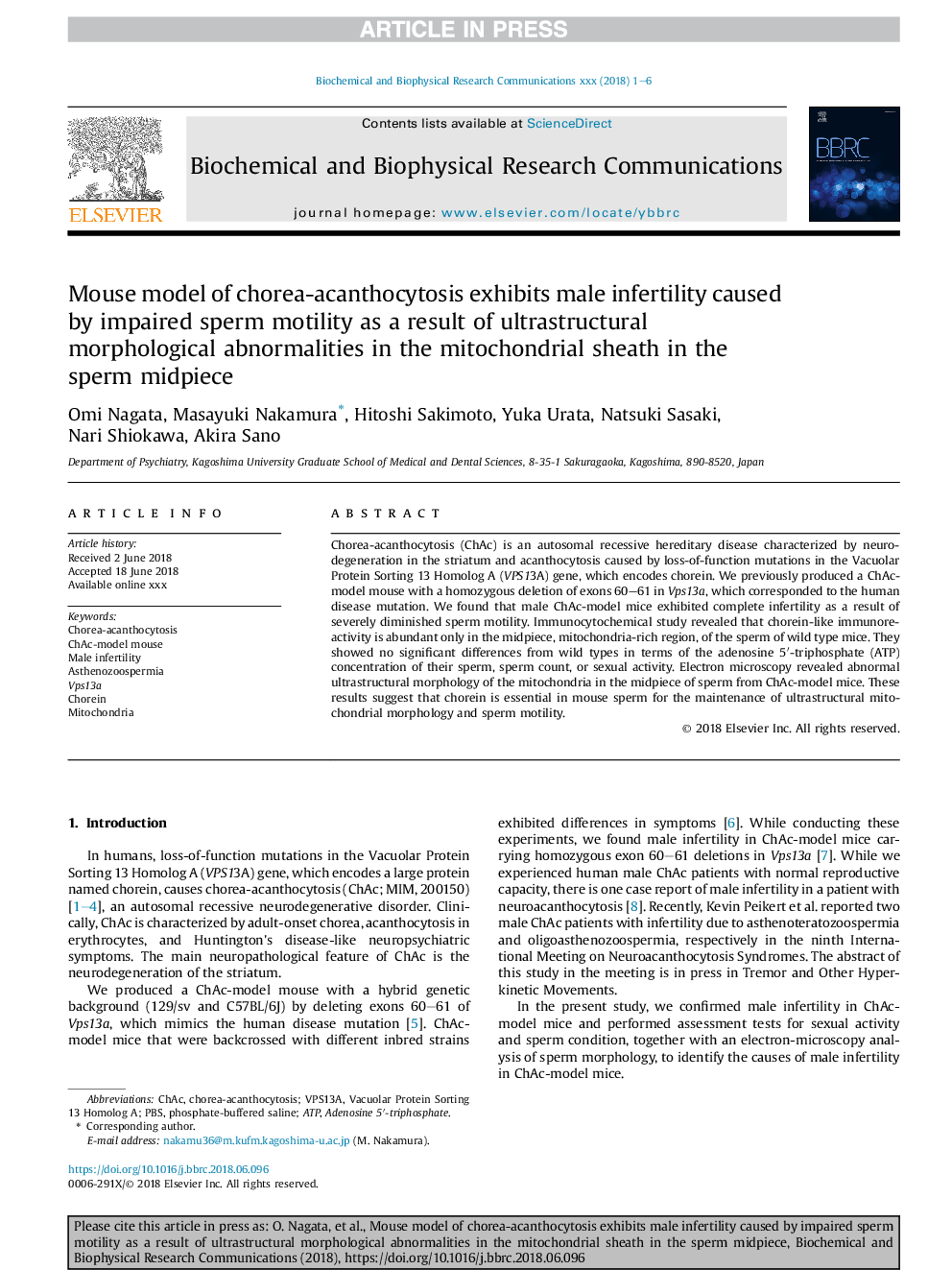| Article ID | Journal | Published Year | Pages | File Type |
|---|---|---|---|---|
| 8292387 | Biochemical and Biophysical Research Communications | 2018 | 6 Pages |
Abstract
Chorea-acanthocytosis (ChAc) is an autosomal recessive hereditary disease characterized by neurodegeneration in the striatum and acanthocytosis caused by loss-of-function mutations in the Vacuolar Protein Sorting 13 Homolog A (VPS13A) gene, which encodes chorein. We previously produced a ChAc-model mouse with a homozygous deletion of exons 60-61 in Vps13a, which corresponded to the human disease mutation. We found that male ChAc-model mice exhibited complete infertility as a result of severely diminished sperm motility. Immunocytochemical study revealed that chorein-like immunoreactivity is abundant only in the midpiece, mitochondria-rich region, of the sperm of wild type mice. They showed no significant differences from wild types in terms of the adenosine 5â²-triphosphate (ATP) concentration of their sperm, sperm count, or sexual activity. Electron microscopy revealed abnormal ultrastructural morphology of the mitochondria in the midpiece of sperm from ChAc-model mice. These results suggest that chorein is essential in mouse sperm for the maintenance of ultrastructural mitochondrial morphology and sperm motility.
Related Topics
Life Sciences
Biochemistry, Genetics and Molecular Biology
Biochemistry
Authors
Omi Nagata, Masayuki Nakamura, Hitoshi Sakimoto, Yuka Urata, Natsuki Sasaki, Nari Shiokawa, Akira Sano,
